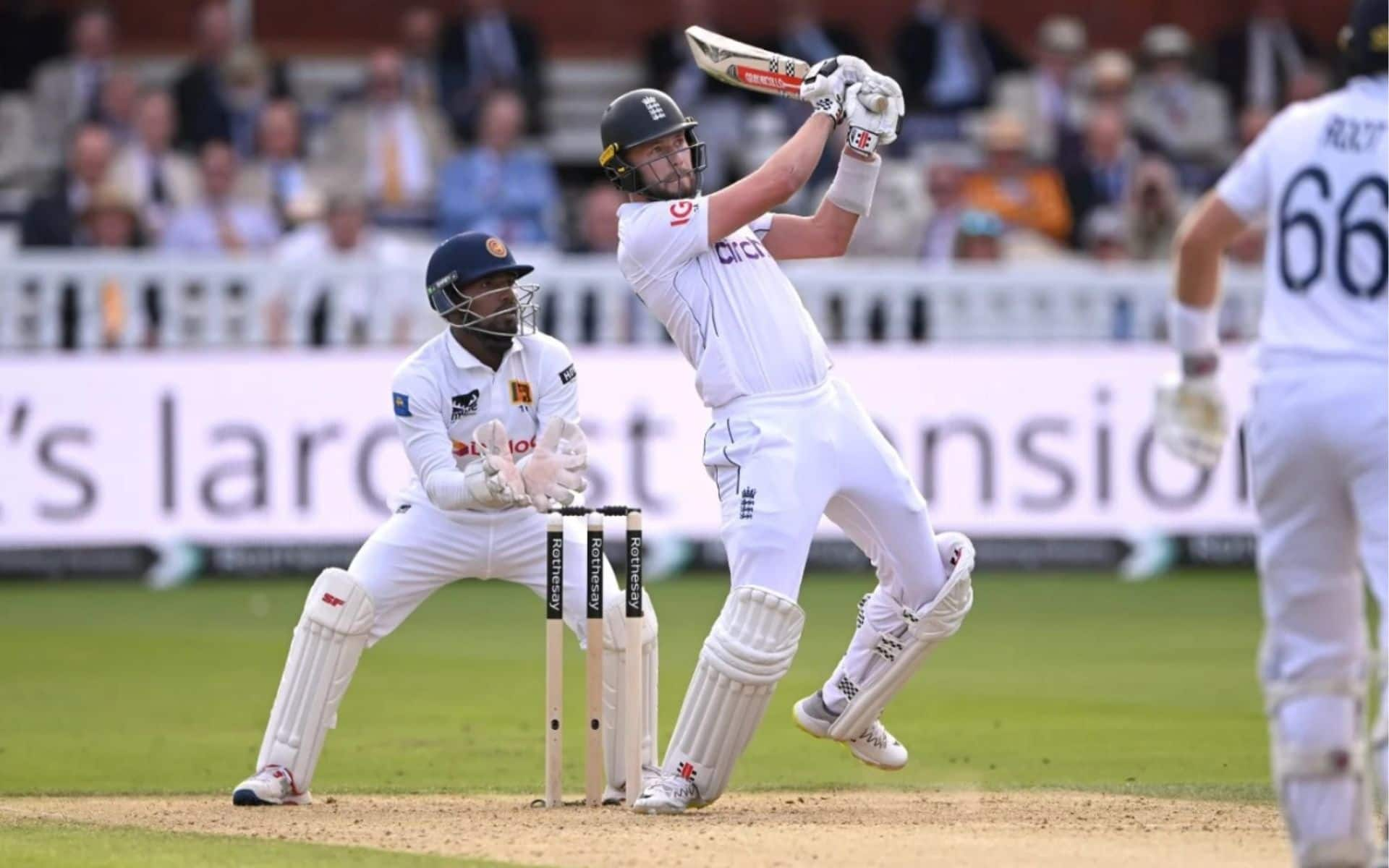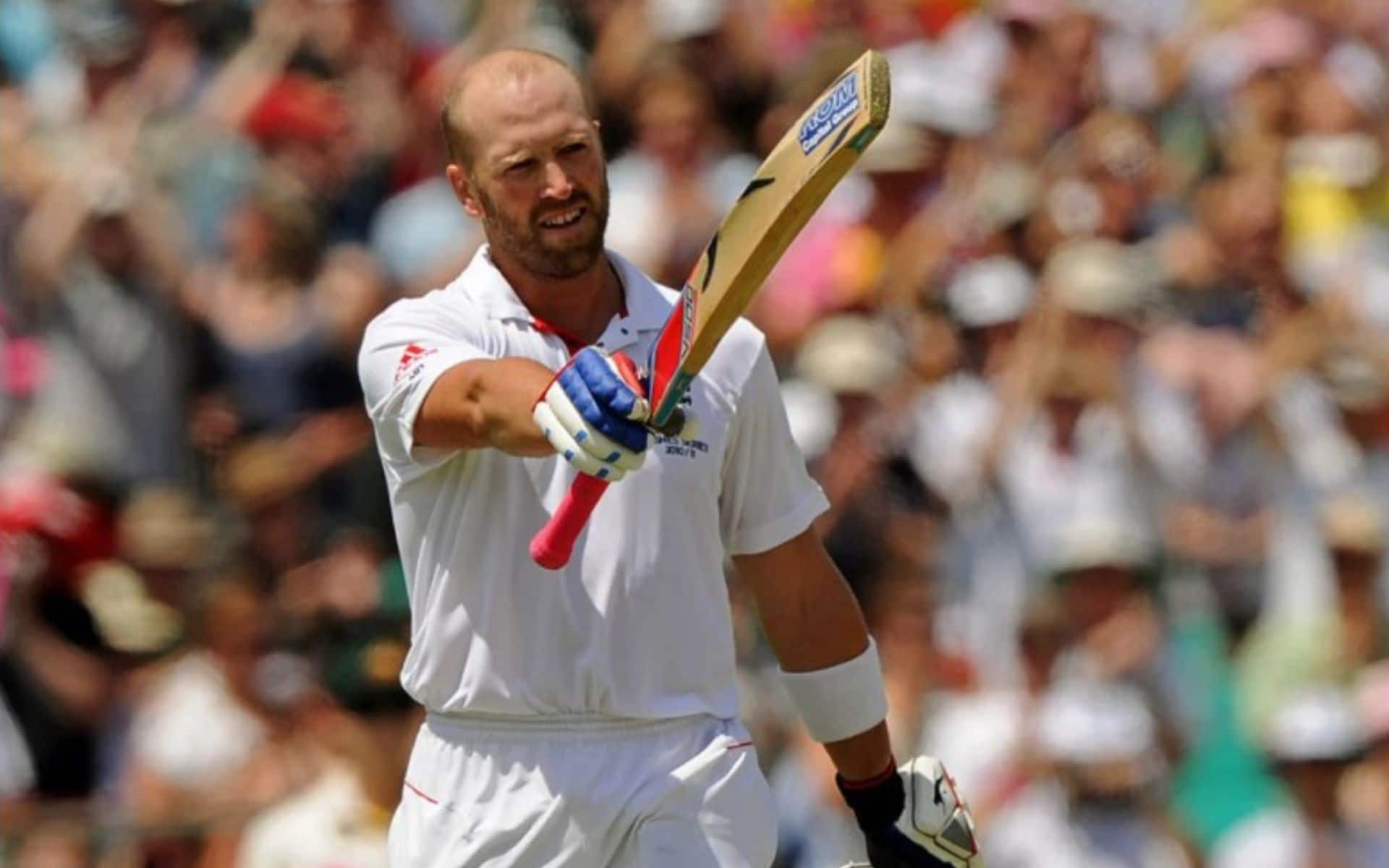


Gus Atkinson in action against Sri Lanka in August 2024 (x.com)
England’s lower-order batters often tend to produce remarkable rearguard fightbacks with much resilience and flair. Throughout their nearly 150-year-old Test history, numerous specialist bowlers and lower-order players have risen to the occasion to lift their team out of crisis.
Here at OneCricket, we target England’s number eight batting spot and look back at five of the highest individual Test scores recorded in that position.
Leading England in a home Test series against West Indies in June 1969 at Lord’s, bowling all-rounder and captain Ray Illingworth scored 113 crucial runs by occupying over three-and-a-half hours at the crease. Up against a first innings total of 380, Illingworth arrived in the middle at 189-6 while batting at number eight.
Still 191 runs away from the deficit, the English captain shared 60 runs for the seventh wicket with fellow centurion John Hampshire, and another 83 runs for the tenth wicket with number 11 batter John Snow. Illingworth’s innings kept the English deficit down to 36 runs and helped them save the all-important Test match.
 Gus Atkinson celebrating his century (x.com)
Gus Atkinson celebrating his century (x.com)
England’s 26-year-old fast bowler Gus Atkinson unfurled his wares with the bat by lifting his team out of crisis at 216-6. Batting at number eight, Atkinson counterpunched Sri Lanka at Lord’s with a 92-run partnership with Joe Root at a standard ‘BazBall’ pace. Moreover, he also added another 85 runs with number nine Matthew Potts to set up England’s 427-run first innings total in the second Test of their 2024 home series.
Gus Atkinson himself pounded 118 runs from just 115 balls with 14 boundaries and four sixes to record one of the highest Test scores by an English number eight in history.
 Matt Prior (x.com)
Matt Prior (x.com)
After restricting Australia to 280 in the first innings of the fifth Ashes Test from 2011 at the SCG, England raced to 380-6 following Alastair Cook’s grand 189. From there on, number eight batter Matt Prior only piled on Australia’s misery alongside Ian Bell. Prior shared 107 runs with Bell for the seventh wicket and 102 runs with Tim Bresnan for the eighth wicket to ultimately smack a swift 118 from 130 balls off his own.
Matt Prior’s century, laced with 11 boundaries and a six, extended the English lead to 364 runs to help them claim a huge innings win by 83 runs. The raging England team also conquered the Ashes by a 3-1 margin.
England’s top-order batter Colin Cowdrey batted at number eight for a change against New Zealand at Wellington during the three-match series of 1963. After he arrived to the crease at 197-6, the Englishmen had already secured a three-run first innings lead over the hosts. Cowdrey, however, extended the same lead to 234 runs by the time his captain Ted Dexter called for a declaration at 428-8d.
Batting with the tail, the cricketer scored an unbeaten 128* while belting 10 boundaries in the process. His innings also set up England’s emphatic innings win as they went 2-0 up in the series.
In the only Test from England’s 1892 tour of South Africa at Cape Town, visiting number eight batter Henry Wood top-scored for his side with an unbeaten 134. With no other half-century in the innings, Wood’s epic took England to 369 runs as they gained a huge 272-run first innings advantage over the hosts.
England went on to win the match by an innings and 189 runs. More than 132 years later, Henry Wood’s marathon batting effort remains the highest Test score ever recorded by an English number eight.